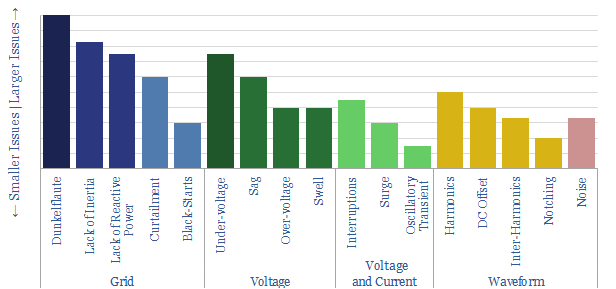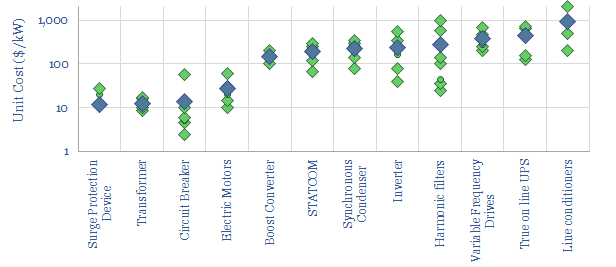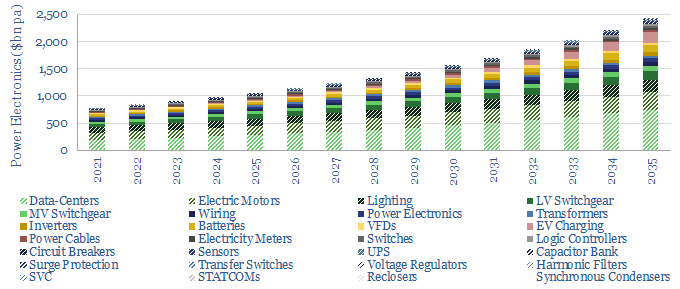The purpose of this data-file is to summarize the main challenges in power electronics, products offering solutions, and how their deployment will evolve amidst the ramp-up of renewables and electrification. Hence we have attempted to quantify power electronics’ market size, product by product. Spending ramps from $360bn pa to over $1trn pa by 2035 as part of the energy transition.
We describe c15 problems that are incurred by power consumers, all of which will be amplified amidst the build-out of renewables, some more than others.

In turn, this means we expect c$100bn pa growth in the market for compensatory power-electronics solutions by 2030 (this number excludes grid-scale batteries). Different devices, examples, market sizes and costs are summarized in the equipment tab.

Increasing electrification, safely, reliably, amidst the build-out of renewables is going to require ramping up the use of power electronics for commercial and industrial customers. We think a $360bn pa market for power electronics in 2021 could expand to around $1trn pa by 2035. Our numbers are also broken down in this data-file.
Categories of equipment covered in the data-file include switchgear, variable frequency drives, inverters, batteries, meters, logic controllers, harmonic filters, sensors, surge arresters, EV charging, capacitor banks, STATCOMs, other voltage regulators, synchronous condensers, and other categories that matter in commercial and industrial power.
Power electronics is a complex topic. To help decision-makers save time and quickly gain a good understanding, we have published a primer into energy, a primer into electricity, a primer into power quality, and an overview of renewables volatility.
Back-up data follows from technical papers in the final tab.
